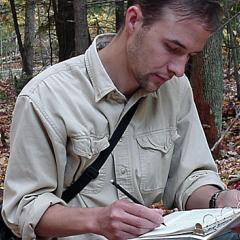About Lloyd's Work
Lloyd Gamble recently accepted a fellowship with the American Association for the Advancement of Science (AAAS) that will place him at the U.S. Department of State in Washington, DC. There, he will be working on international environmental policy matters related to biodiversity conservation under the Office of Ecology and Natural Resources Conservation. Lloyd completed his doctoral work in 2007 at the Department of Natural Resources Conservation at the University of Massachusetts, Amherst, and continued his research at UMASS into this year as a post-doctoral associate. His research interests focused on landscape-level population processes and population viability in pond-breeding amphibians. Specifically, in order to determine what types of conservation strategies may most effectively protect this group of organisms, he conducted an extensive field investigation focused on the marbled salamander (Ambystoma opacum), a species designated as 'Threatened' in Massachusetts. Using mark-recapture techniques across numerous wetland sites in an intact forested system, he quantified breeding population sizes, local demographic rates, and dispersal frequency among sites. This work culminated in the development of computer-based population models to assess the importance of dispersal and habitat connectivity to regional population persistence. Prior to his graduate work, Lloyd conducted a zoological inventory at The Nature Conservancy’s Altamaha River Bioreserve in coastal Georgia and a study of home range size and foraging behavior in the federally endangered red-cockaded woodpecker in northwest Florida. Most recently, he worked with The Nature Conservancy’s Eastern Resources Office in Boston where he facilitated collaborations between natural heritage programs and TNC science staff across the Northeast to compile and manage range-wide distribution data on rare species, and supported local and regional conservation planning efforts.
